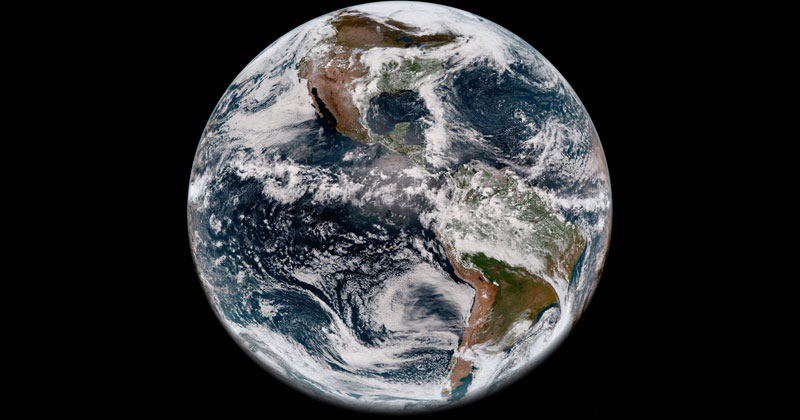

The GOES-17 satellite took this stunning, full-disk snapshot of Earth’s Western Hemisphere from its checkout position at 12:00 p.m. EDT on May 20, 2018. GOES-17 observes Earth from an equatorial vantage point approximately 22,300 miles above the surface.
This imagery was created using two visible bands (blue and red) and one near-infrared “vegetation” band that are functional with the current cooling system performance. The imagery also incorporates input from one of the ABI’s “longwave” infrared bands that is functional during a portion of the day despite the cooling system issue.
When combined as a “GeoColor” image, depicting the Earth in vivid detail and colors intuitive to human vision, these bands provide valuable information for monitoring dust, haze, smoke, clouds, fog, winds and vegetation. ABI imagery also provides information on cloud motion, helping meteorologists monitor and forecast severe weather and hurricanes. The improved resolution and faster scanning ability of the instrument compared to the previous generation of GOES allow forecasters to more rapidly detect and analyze storms as they are developing and intensifying.
If you want to see the full 10848 x 10688 pixel resolution image, click here.






